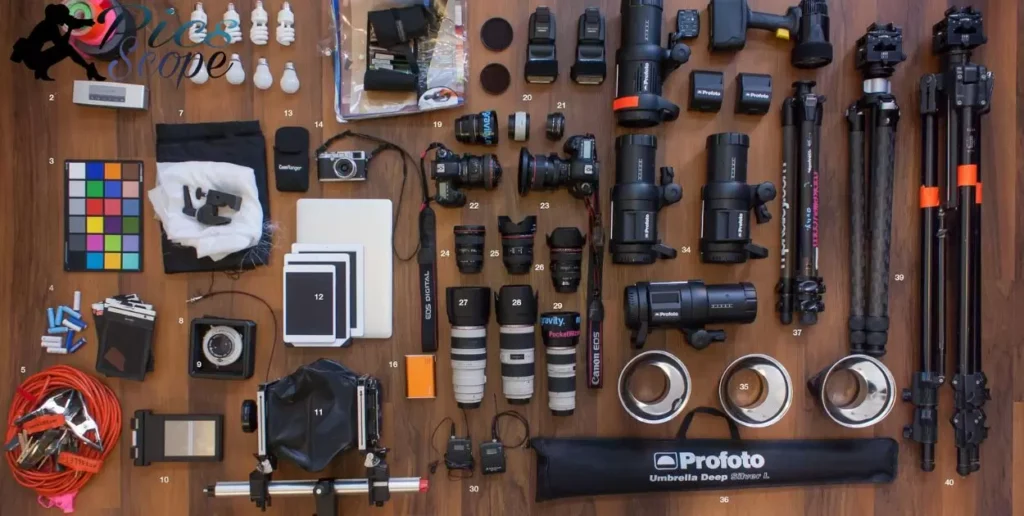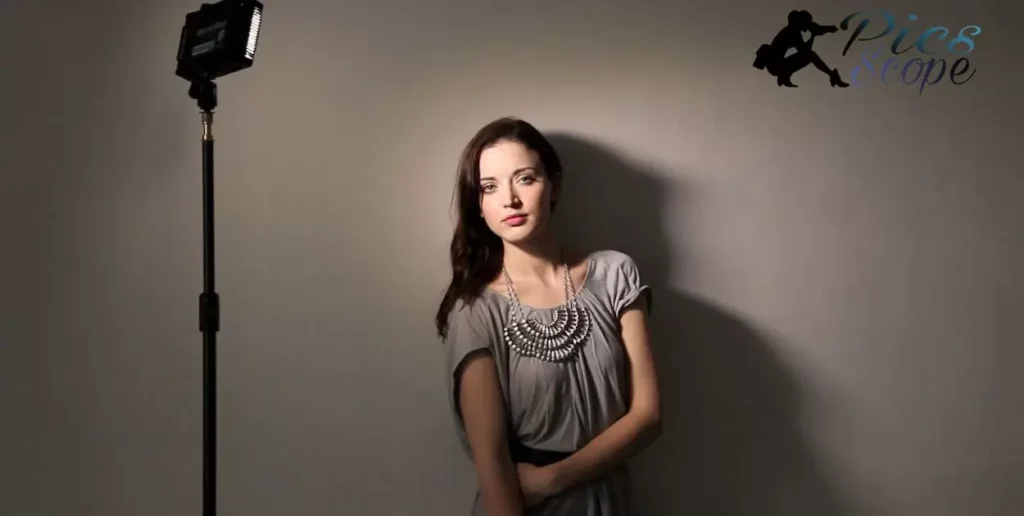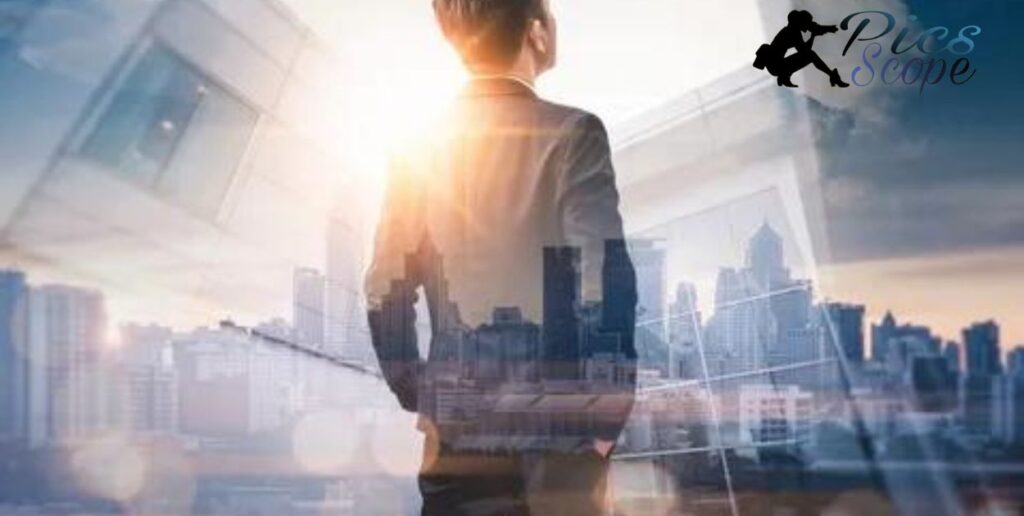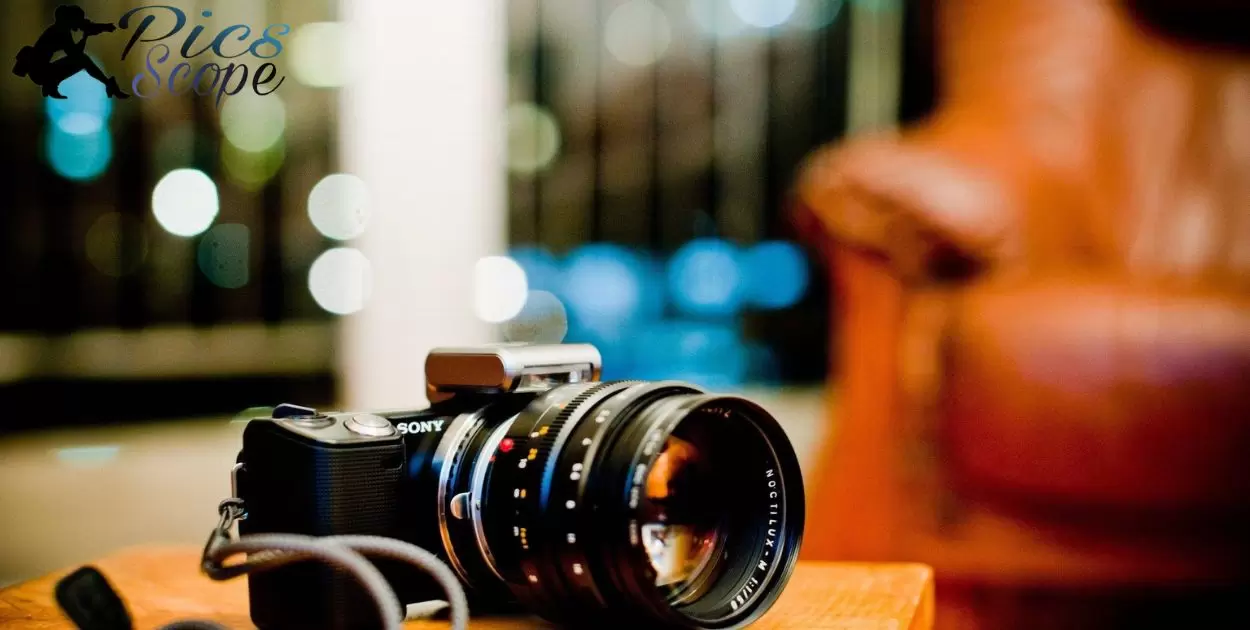Photography is the art, application and practice of capturing light and recording it digitally or on a sensitised surface. Photography uses lenses and light to record scenes, people and objects. By using light and lenses, photographs freezes moments in time to be captured and shared.
The importance of Photography cannot be stressed enough in today’s digital world.
Photography allows us to stop time, to capture a moment that will not return.” Photography plays a significant role in our lives whether it is for memories with friends and family or for professional use. It has become an integral part of our daily lives.
Photography is all about the different types of cameras, equipment and techniques used. Whether it’s achieving the right composition, using natural or artificial lighting effectively or different styles like landscape, portrait or street photography. Mastering photography involves understanding different technical aspects like shutter speed, aperture, ISO along with developing an eye for creativity and visual storytelling.
History of Photography: How did photography evolve over time?
Photography started in the 1830s. The first permanent photograph was taken by Joseph Nicéphore Niépce in France. His photograph took eight hours of exposure time to produce. Later, other photographers like Louis Daguerre, William Henry Fox Talbot, and others improved the process during the early 1800s.
They developed different techniques like daguerreotype and calotype which reduced exposure time making photography widely available. Through the 1900s, photography evolved significantly. Technologies like color film and digital sensors were introduced. Film formats changed from large plates to small and portable formats.
Instant cameras made photographs instantly available. In the 2000s, proliferation of digital cameras and smartphones made photography accessible to everyone leading to the selfie culture of today. Advancements in printing technologies allowed photographs to be easily shared digitally.
Types of Photography: What are the different genres in photography?
Some popular types of photography include landscape photography, portrait photography, street photography, wildlife photography, fashion photography and documentary photography. Landscape photography involves capturing the beauty of nature and outdoor scenery.
Portrait photography is about capturing people, usually their face, body, or personality. Street photography depicts spontaneous scenes captured in public places. Other genres include wedding photography which involves photographing wedding ceremonies and events.
Product photography is used to showcase and sell different items. Astrophotography captures astronomical objects like stars, planets, nebulae through long exposure photographs. Underwater photography involves taking photos when submerged in water. Each genre requires unique skills, techniques and photography style.
Equipment for Photography: What gear do photographers use?
Some common equipment used includes cameras, lenses, tripods, camera bags, memory cards, batteries and chargers. Modern cameras can be digital single lens reflex (DSLR) cameras, mirrorless cameras or compact cameras. Lenses let photographers zoom in close or capture wide-angle shots using wide angle, telephoto or prime lenses.
Additional gears include flashguns, remote shutter releases, light meters, reflectors and lighting equipment like studio strobes. Photographers may need support equipment like tripods, monopods or gimbals based on the location or speed requirements. Post production software, printers are other investment areas for professional photographers. Memory cards, cables and laptops help store, edit and share photographs.
Photography Cameras: What are the different types of cameras?
Some main types include DSLR cameras, which are high quality with detachable lenses but bulky. Mirrorless cameras are similar to DSLRs but more compact without an optical viewfinder. Point and shoot cameras are portable compact cameras with fixed lens that are ideal for casual use.
Action cameras like GoPro are waterproof, durable options used mainly for filming videos during action sports. Medium format cameras use a larger image sensor than 35mm cameras but are more expensive. Phone cameras have become very advanced allowing photography right from smartphones. Specialty cameras include drones with cameras for aerial photography.
Photography Lenses: What role do lenses play in photography?
Photography lenses are responsible for capturing and transmitting the light that forms the photograph. Different lenses serve different purposes based on their focal length and aperture size. Wide angle lenses have a short focal length and are ideal for landscapes. Telephoto lenses compress perspective and used for sports and wildlife.
Prime lenses have a fixed focal length and wider aperture. Zoom lenses allow shooting within a focal range but have smaller maximum aperture. Macro lenses are for extreme close-up shots revealing small details. Specialty lenses exist for wide angle landscapes, portraits, macro photography and so on. Understanding lenses is crucial for photographers to make informed gear choices.
Other Photography Equipment: What other gear is important for photographers?

Photographers need adequate support gear for different purposes. Tripods provide stable camera platforms and are necessary for long exposure shots. Monopods balance the camera in one hand freeing the other. Camera bags safely hold equipment and come in many styles from small over-shoulder bags to roller bags.
Other useful accessories are spare batteries, chargers, memory cards, lens filters and lenses caps. Remotes allow triggering the camera shutter without camera shake. Light meters or apps help evaluate lighting conditions. Reflectors, flash units, and studio lighting gear help photographers control and mould lighting on subjects or scenes.
Exposure in Photography: What is exposure and how does it work?
Exposure refers to the amount of light that reaches the camera sensor or film. The three elements that determine exposure are aperture, shutter speed, and ISO. The aperture indicates the size of the opening in the lens and depth of field. Faster shutter speed freezes motion but less light enters. ISO is the light sensitivity and higher ISO allows less light but adds noise/grain.
Balancing these elements gives the photographer control over exposure. Underexposure means not enough light resulted in a too dark photo. Overexposure has too much light making photos too bright. Correct exposure means proper brightness based on the scene and photographic vision.
Aperture in Photography: How does aperture affect photographs?
Aperture refers to the opening in the camera lens through which light travels. It is measured in ‘f-stops’ like f/1.4, f/8, etc. Lower f-stops like f/1.4 and f/2 have larger aperture admitting more light but lesser depth of field. Higher apertures f/8, f/16 have smaller openings but increase the depth of field.
A larger aperture blurs out backgrounds for subject isolation in portraits. Small apertures increase depth of field capturing sharp foreground and background elements in landscapes. Aperture also impacts low light ability, with wider apertures taking brighter photos. Creative use of different f-stops help photographers control depth of field as required by their creative vision and scene.
Shutter Speed in Photography: How does shutter speed impact photos?
Shutter speed indicates the amount of time the camera shutter remains open. Shorter shutter speeds like 1/1000 sec freeze rapid motion while longer speeds like 1/15 sec blur motion. Extremely fast speeds under 1/1000 sec can stop ultrarapid movement like a hummingbird’s wings. Very slow speeds over 1 sec capture light trails, clouds and moving water.
Shutter speed is crucial for sharp photos of fast moving subjects like sports. Faster speeds are preferred in low light since less light enters. Slower speeds can turn flowing water into smooth silky surfaces.
With experience, photographers learn to choose shutter speeds that best match the scene movement for unique affects. Understanding shutter speed empowers creative control over photographs.
ISO in Photography: What is ISO and how does it impact images?
ISO refers to the light sensitivity setting on a camera. Higher ISO like 800, 1600 allows taking photos in lower light but increases image noise and graininess. Lower ISO like 100 is suitable for bright outdoor conditions but underexposes in low light. Raising ISO is helpful in situations with available light like weddings, events and wildlife photography. ISO directly impacts the brightness and quality of photographs.
Higher ISOs produce images with less noise on newer cameras versus older models. Experimenting with ISO range helps photographers choose ideal settings for varying environments depending on lighting, moving subjects or shutter speeds required. Proper selection of ISO ensures good exposure as per the scene being photographed.
Composition in Photography: Why is composition important in photography?
Composition refers to how visual elements are arranged or placed in the frame. Good composition makes photos visually appealing and engaging for viewers. Key elements include framing the subject, rule of thirds, leading lines, effective foreground and background placement. Photos with thoughtful composition hold attention compared to snapshots.
Understanding compositional techniques allows creating impactful images that effectively deliver the photographic message. Composing with intent ensures photos have artistic integrity beyond simply capturing a scene. With practice, photographers train their eye to naturally frame shots with balance, contrast and dynamic visual layouts.
Lighting in Photography: How does lighting impact a photographic image?

Lighting is extremely vital for photos as it determines the visibility of shapes, textures and colors. Different lighting impacts the mood, style and quality of photographs. Harsh overhead lighting casts shadows but soft diffuse lighting flatters skin tones. Backlight makes outlines glow but harsh front lighting washes out faces.
Flashfill adds brightness to faces in dark backgrounds while bounce flash lifts shadows softly. Natural lighting by sunrise, sunset or cloudydays lends flattering warm hues. Spotlights and studio strobes provide controllable lighting for portraits and products. Understanding lighting helps photographers stylize images through carefully manipulating available or artificial lights.
Storytelling with Photography: How can photography be used to tell visual stories?
Photography extends beyond capturing moments to share stories. From photo essays in magazines to Instagram stories, strong images transport viewers into another world. Maintaining a consistent editing style links individual photos into a cohesive visual narrative. Captions or titles provide context but the photographs do majority of speaking.
Techniques like sequencing related ideas, capturing progression over time or focusing on a personality can narratively engage audiences. Emotional connection through thought provoking content makes stories impactful beyond just aesthetics. Storytelling in photographs inspires, educates and spreads awareness to bring positive change.
Different Genres of Photography: What are some popular genres in photography?
Some popular genres are landscape photography of outdoor scenery, wildlife photography capturing animals in nature, street photography of candid urban scenes, travel photography of places visited, fashion photography for magazines and commercial purposes.
Wedding photography of marriages, astro-photography of night skies, lifestyle portraiture, architectural, underwater and aerial photography capturing unique angles are also genres pursued widely. Each requires distinct equipment, photo styles and challenges.
Documentary photography or photojournalism shares stories of people and society. Time lapse, macro, infrared and other specialty genres involve precise techniques. Hobby genres include automotive, aviation, maritime, product and still life photography capturing specific interests for fun. With dedication any interest can be pursued as a photography passion.
Careers in Photography: What career paths exist in the field of photography?
Popular career choices are photojournalist covering news events, wedding photographer, portrait photographer capturing headshots and family photos, product photographer for ecommerce, real estate photographer shooting homes listings. Other options are fashion photographer, wildlife photographer on expeditions, forensic photographer assisting investigations.
Some work as staff photographers for publications, do commercial photography for print ads or create stock photos sold online. Many work independently as freelancers taking on various projects.
Emerging areas are drone photographer creating aerial photos and social media manager posting business photos online. Photography also offers many allied career paths in videography, retouching or teaching photography.
Selling Photography: How can photographers commercially sell their work?
Photographers generate income through paid assignments, licensing photos and print sales. Freelancers pitch their work to publications, companies for projects. Photobooks or fine art prints sell on websites and in galleries. Stock agencies handle licensing photos for global customers.
Print-on-demand services from galleries help constant sales. Photographers are also contracted for corporate headshots, product catalogs or real estate virtual tours. Crowdfunding campaigns pre-sell creative projects to fund personal work. Teaching photography tutorials or workshops earns additional income.
Creating visual styles or shots in demand unlocks commercial opportunities. Photographers market their unique styles online consistently to drive higher sales over time. Having business plans enables generating stable revenue streams.
Photography Techniques: What fundamental techniques do photographers use?
Effective photography requires understanding fundamental techniques to properly capture images. Mastering technical skills allows photographers to creatively express themselves. The table below outlines some key techniques used in photography:
| Photography Technique | Description |
|---|---|
| Aperture | Controls depth of field by adjusting the diameter of the diaphragm opening in the lens. A smaller aperture number results in a larger opening and shallower depth of field. |
| Shutter Speed | Controls exposure time by regulating the duration that the camera sensor is exposed to light. Faster shutter speeds freeze motion while slower allow for blurring. |
| ISO | Adjusts the light sensitivity of the camera sensor. Higher ISO numbers allow using faster shutter speeds or smaller aperture but introduce more image noise. |
| Composition | Refers to intentionally arranging visual elements and subject placement to achieve balanced, interesting photographs. Follows rules like the rule of thirds. |
| Lighting | Encompasses understanding and utilizing different lighting conditions. Natural light, flash, reflective surfaces and more can dramatically impact photographs. |
Photography Processing: What happens after the shutter click in photography?
After capturing raw images, photographers process photos on computers. Raw files store higher quality image data flexible to adjustments. Initial processing involves white balance to set accurate color tones. Exposure adjustments recover dark or bright areas. Cropping removes distractions or reframes perfectly.
Techniques like dodging and burning selectively lighten or darken areas for balanced exposures. Localized edits target individual elements like eyes or skies. Noise reduction cleans images captured at high ISO.
Creative filters mimic film or mimic vintage styles. Final steps involve watermarking digital files and choosing optimum file formats and sizes for print or web sharing. Processing completes photographs for presenting artist’s perspective.
Future of Photography: Where is photography headed in coming years?
With AI, photography is adopting new technologies that detect scenes and optimize settings. Cellphones are facilitating mobile photography and social sharing. 360 degree and augmented reality apps are blending virtual overlays. Drones enable aerial angles while computer vision empowers intelligent editing.
Growing digitization through cloud storage makes workflow collaborative across devices. Advancements in camera sensors and image processing continue to yield higher resolution photos retaining finer details. New sharing platforms are being invented catering to photo communities.
Technologies like 3D scanning may reconstruct visual scenes digitally. While equipment evolving, the core creative vision remains a photographer’s key asset to stay relevant and tell impactful visual stories in any future.
What’s the Future of Photography? Where Is the Industry Heading?

Photography is moving towards heavy integration of artificial intelligence capabilities in cameras. Computer vision guided auto modes may soon resemble human decision making. 8K and larger resolution sensors would make photos incredibly detailed matched with powerful yet portable processors. Faster throughput allows burst capturing many frames in seconds.
Cloud backups and collaborative editing online are changing photography culture. Computer generated images may also co-exist with traditional photography. 360 imaging, virtual reality and advanced compositing techniques would further push the limits.
Nature and documentary photography may face new challenges with climate change affecting subjects and locations. Despite changes, photographers’ ability to creatively express themselves would keep the industry vibrant and growing.
FAQ’s
What is the basic definition of photography?
Photography is the process of capturing light with a camera to create images.
What are the main components used in photography?
The basic components needed for photography are cameras, lenses, exposure settings and lighting.
What genres or types of photography exist?
Popular genres include landscapes, portraits, weddings, wildlife, street, macro and many more specialized areas.
What skills are important for photographers?
Strong composition skills, understanding light and exposure control, learning different camera functions and post processing abilities are key.
What career options exist in photography?
Careers may include photojournalist, wedding photographer, product photographer, commercial photographer and opportunities in allied fields of video and education.
Conclusion
Photography is more than just capturing images; it’s a powerful form of artistic expression. Through the lens, moments are frozen in time, telling stories and evoking emotions. As technology advances, so does the world of photography, offering endless possibilities for creative exploration.
Understanding photography goes beyond the mechanics of a camera. It’s about unlocking your creativity, mastering the play of light, and capturing the essence of a moment. Whether you’re a beginner or seasoned photographer, the journey of discovering what photography truly is continues to unfold, promising a world of visual storytelling and endless fascination.







